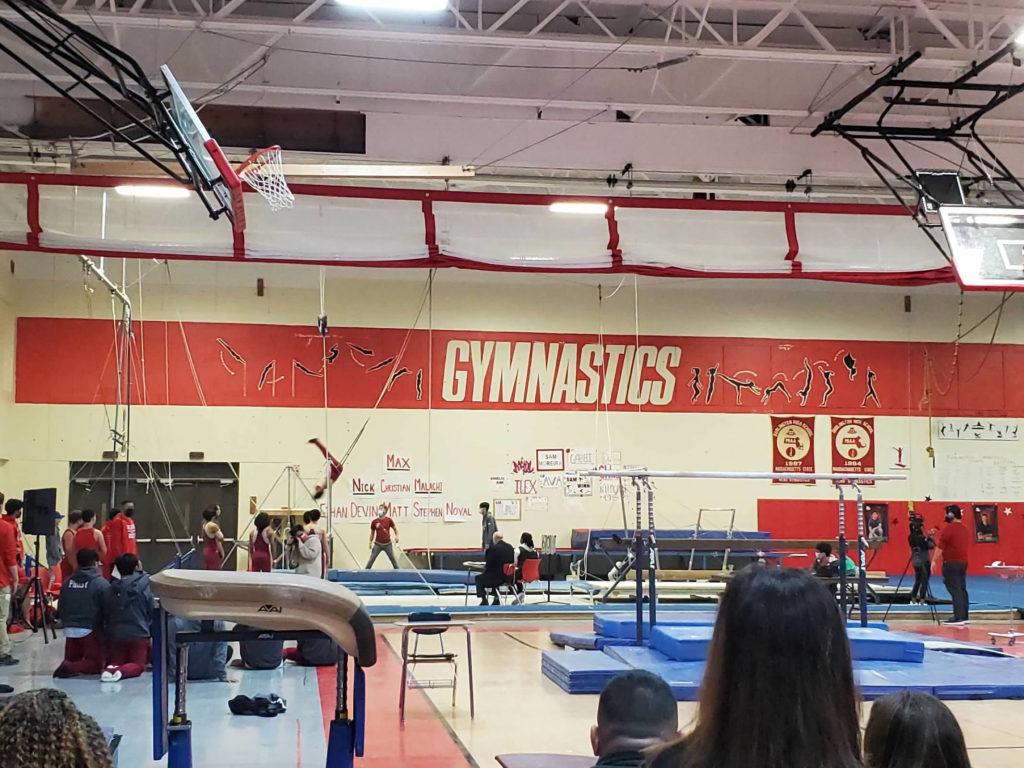
The following originally appeared on StickItMedia in February 2020. The site is having some errors at the moment, so I thought it important that this moves over here for the time being. This is relevant again as Massachusetts once again debates if boys gymnastics should remain a high school sport.
—-
Many men’s gymnastics followers point to the impact of Title IX as providing a critical blow to the sport on the collegiate level. However, an in-depth look at the history of gymnastics in education over the past 60 years shows that while Title IX is used as an excuse to eliminate collegiate teams, there were several elements that offered up men’s gymnastics to the chopping block. It was a perfect storm of court cases involving risk, injury and liability in physical education classes and school sports and a change in media coverage.
The Court Cases
A sequence of Illinois Supreme Court decisions is an example of the increase in litigation surrounding physical education and school athletes, and the dates of these cases align with the drop in school gymnastics programs and thus, the popularity of gymnastics amongst men.
These four cases have far more impact on men’s participation in gymnastics than any enforcement of Title IX:
Kobylanski vs. Chicago Board of Education (1976)
Chilton vs. Cook County School District (1976)
Gerrity vs. Beatty (1978)
Thomas vs. Chicago Board of Education (1979)
These four court cases established perimeters of liability when it came to activities in a physical education (P.E.) curriculum, equipment used in P.E. and varsity sports, and the duty of care of teachers and coaches in both P.E. and varsity activities. Kobylanski and Chilton directly relate to gymnastics, as both cases involve gymnastics exercises done in a P.E. class; one case involved still rings, the other trampoline.
These cases (and I’m sure others) established a few changes of tide in the teaching of physical education at the time: liability for a student’s accidental injury falls on the school, not the individual teacher (unless the student can establish “willful and wanton misconduct” on the part of the teacher) and liability regarding the safety of equipment falls on the school and not the individual coach or teacher.
Schools began to look at physical education curriculums to increase safety and mitigate any potential legal problems, and gymnastics began to get cut. While balance beam, parallel bars, vault, trampoline, rope climb and more used to be regular gym class activities, around 1978, they start disappearing from the curriculum. This trend continues throughout the 1980s. When existing equipment broke, it was not replaced, but phased out. When new schools were built and gymnasiums were stocked, gymnastics equipment was not ordered.
When gymnastics starts to disappear from the curriculum, you lose a chance to introduce the sport to children. This is the final shove that puts control of the sport in the hands of clubs and not schools. If you want to learn the sport, you now have to be aware of it outside of the school environment, have a club nearby, and have the money to afford classes. This eliminates gymnastics as a possible activity for many children in lower economic classes. Even for the middle classes, if you can spend X amount to try gymnastics, or you spend half of that to try T-ball.
If gymnastics equipment no longer was around school, how could a school sponsor a high school gymnastics team? They would have to find a local club to take on the team and find the room to rent or lease the space in their already-tight budgets. Will that club insist that one of their coaches lead the team instead of the use of one of the school’s teachers? Is any of that cost in line with the number of students coming out for the team?
But these factors alone did not cause the precipitous drop in popularity of the sport among men. This was part of a perfect storm that started in 1972, when how the sport is presented to the public begins to change. The marketing of gymnastics as a “female” sport starts in 1972, grows in 1976, and starts to have significant impact on the numbers of male gymnasts in 1979.
I have been working on this project since 2017, and welcome any suggestions, material or input. Please email me at katcornetta@gmail.com